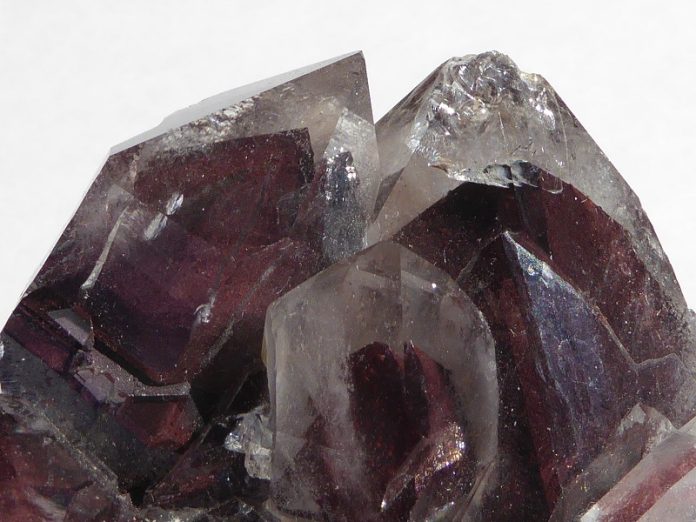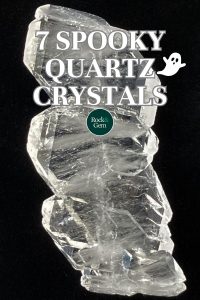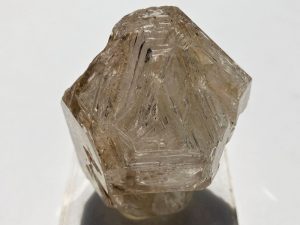
Types of quartz are plentiful, but here’s a spooky-themed collection of quartz that’s sure to be a spine-tingler.

Quartz crystals grow when atoms of silica and oxygen lock together in a regular and repeating pattern as silicon dioxide. When quartz crystallizes, its shape connects to its nourishment, or the physical and chemical conditions surrounding it. “Perfect” or “ideal” quartz has hexagonal (six-sided) crystals with triangular faces forming pyramids on top and bottom. But perfection is the exception.
How Do Types of Quartz Crystals Misgrow?
In nature, growth conditions constantly change and crystals become distorted. One crystal face may grow faster than others. Crystals may split and develop multiple points and faces. A crystal may be twinned or intergrown with others. It may stop growing, dissolve a bit and then resume growth. In short, don’t bet on odds for a perfect crystal in nature! Inclusions in quartz are not uncommon.
1. Gwindel
Also called quendel, gedrehten or twisted quartz, gwindel (pronounced “gvin-dell”) is another collection of many stacked crystals. In the case of gwindels, each crystal seems to have formed at a somewhat curved or bent offset from the others. The result is a slightly curved comb or toothed pattern.

2. Skeletal Quartz
Skeletal quartz (also called window or Fenster quartz) crystallizes in unstable conditions with more saturation than normal. This causes the edges to grow faster than the crystal faces so the edges stick out and the faces are set back like glass in a window frame giving it a layered or ribbed look. (Hence the name skeletal quartz.) There also may be etchings and cavities with clay minerals, gases or water trapped inside.

3. Phantoms
Quartz crystals developing within mineral solutions sometimes stop growing and then grow again later. In between, other minerals may get deposited on a crystal face. These leave spooky zones of different colors within the quartz, including blood red which comes from the iron mineral hematite. Crystals-within-a-crystal are referred to as inclusions or “phantoms.”

4. Faden Quartz
Faden means “thread” and in the case of Faden quartz, the name comes from the ghostly white line running through it. Faden quartz consists of a series of interconnected flat crystals. The white line is made from cracking during quick crystal growth and fluid trapped in the crack.

5. Twins
Twinning is common and comes in many varieties with quartz, including Dauphine law, Brazil law and Japan law. Japan law twins are a collector favorite. They were named after specimens from a classic locality in Kai, Japan.

6. “The Chiseler”
Rather than an even pyramid shape, chisel quartz has flattened crystals with a wide beveled (slanted and angled) face that looks like a chisel.

7. Spirit Quartz
Spirit quartz, also known as cactus quartz, consists of a primary crystal with prism faces covered by a druse of small second-generation crystals, much like the trunk of a cactus is covered by spines. It is said to be able to connect you with the “spirit realm.”

Collect Different Types of Quartz
Don’t fear skeletons and phantoms. Collect them! The weirder, the better! Each tells a story of growth and misgrowth within the quartz crystal family.
This story about spooky types of quartz crystals appeared in Rock & Gem magazine. Click here to subscribe. Story and photos by Jim Brace-Thompson.













